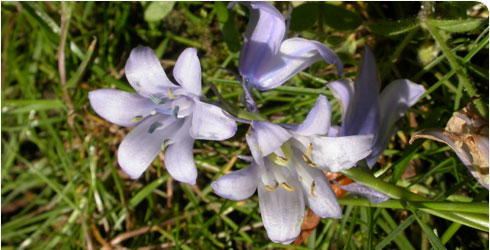Identify your bluebells
There are several different types of bluebell in the UK. The familiar native bluebell, Hyacinthoides non-scripta, is characteristic of woodlands, hedges and other shady places. There is also a Spanish bluebell, Hyacinthoides hispanica, grown in gardens and found in the countryside when it is dumped there. A hybrid, Hyacinthoides x massartiana, is now more common than its Spanish parent.
Here are some tips to help you find out whether your bluebells are native or not.
Pollen colour
The easiest way to tell the difference between native and non-native bluebells is to look at the colour of the pollen.
If it is creamy-white then the bluebell is a native. If it is any other colour, such as pale green or blue, then it is definitely not native.
When the pollen is shed, the empty anther can be a pale cream colour, so make sure you look at the most recently opened flowers at the top of the spike, to find the true colour of the pollen.
Other methods
There are several other ways of distinguishing between native and non-native bluebells. If you have a native then you should be able to answer yes to these questions:
- Do the flowers have a strong sweet smell?
- Are the flowers narrowly tubular with the petals strongly recurved (rolled back)?
- Is the flower spike nodding at the tip?
For all of these questions it is important to look at plants when they start flowering and at flowers which have just opened. Older flower spikes are less unidirectional and more upright, the pollen may be lost and the flowers could have lost their scent.
Check the glossary for help with any of these terms.

